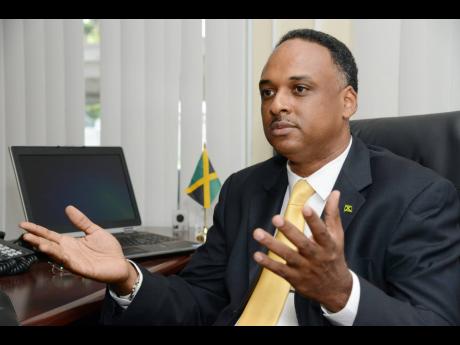Students benefiting from Safe Passage: Safe Routes to School project
The Jamaica Social Investment Fund (JSIF) says it is committed to providing safer roads for the nation’s children through its Safe Passage: Safe Routes to School project, a partnership with the Ministry of Education.
The project, under the Integrated Community Development Project II, is being funded by the Government of Jamaica and the Caribbean Development Bank.
Several schools across Kingston and St Andrew, St James and Clarendon, are to benefit from the $155-million project.
Citing an increase in pedestrian deaths, Shunelle Nevers, project manager for the JSIF’s Safe Passage: Safe Routes to School project, said the initiative is of grave importance. “As the nation grapples with a sharp increase in pedestrian deaths, the time for the prioritisation of pedestrians and a school zone policy is now,” she said.
A total of 33 pedestrians have been killed in road crashes between January 1 and May 3 this year. The figure shows three more fatalities compared to the same period for 2021. Of the 33 pedestrians killed this year, four were children.
Nevers said the project, slated for completion in October, operates within a holistic framework, which contains several components, including the rehabilitation and construction of key pedestrian infrastructure.
“[It also involves] a comprehensive multistakeholder public education programme to increase road safety awareness and incite behaviour change. Road safety is a learned behaviour and, as such, it is imperative that the beneficiaries are given the tools and the support to create the desired change,” Nevers said.
The second phase of the project has seen the implementation of school safe passages in Salt Spring, St James, and construction is underway for safe passages at two schools in Treadlight, Clarendon and one in Greenwich Town, St Andrew.
The first phase of the project was funded by the World Bank under the Integrated Community Development Project. A total of 15 schools across eight communities, including York Town Primary in Clarendon, benefited under the programme. Principal of York Town Primary, Francine Swaby, told The Gleaner that the school is grateful to have benefited.
“Prior to the project, the safety of our students on the corridors to and from school was a concern, because there was nothing protecting them from vehicular traffic. Students, being themselves, would always play on the road while awaiting transportation and, at times, we would receive some frightening accounts of near misses,” Swaby told The Gleaner.
She said students have admitted to feeling safer, and lauded the decision to incorporate the use of visuals into the project.
“They are also reminded daily how to remain safe on the road from the murals erected along the pathway with the lovely, colourful cartoon characters,” she said.
“As the principal, I feel more comfortable in my mind knowing that the students who walk to school, once they get to a point, they are in a safe space, and for that I’m extremely grateful,” said Swaby.
Omar Sweeney, JSIF’s managing director, said the entity is committed to community renewal, increased public safety, and enhancing access to critical road safety infrastructure for the nation’s most vulnerable as they traverse the road to and from school.
Asserting the importance of the project, he said the JSIF has invested over $265 million in 11 communities over the last four years to construct or rehabilitate infrastructure such as sidewalks, bus stops, guard rails and murals.
“Although the Safe Passage project is directly linked to public safety, it also underscores the importance of equity and social justice in our community,” Sweeney told The Gleaner.
He added: “Simply put, not everyone drives; particularly the nation’s most vulnerable. As a result, it is essential that we begin to design effective pedestrian facilities, not just for students but pedestrians overall, as pedestrian infrastructure plays a critical role within the public infrastructure network.”
In the meantime, Nevers is confident that the initiative will yield positive results. “The JSIF is also calling on members of the private sector to reach out, adopt our methodology and help to implement the Safe Passage project, one school at a time,” she said.

